The aluminium surface treatment process in the aerospace industry involves several stages as the aluminum part moves from pretreatment to final treatment. Pretreatment is the first stage of the process. First, the part is immersed in an aqueous degreasing solution to remove ink and grease. Next, the part is immersed in a deoxidizing solution to remove oxides and a thin layer of material. Following this, the part can proceed to the treatment stage of the process such as chemical conversion or anodizing.
To successfully treat aluminium in this way and obtain the necessary results requires products with very specific properties. In the aerospace industry there are different solutions available on the market, but some of them are more hazardous than others and contain toxic substances such as hexavalent chromium or fluoride.
In this article, we will concentrate on the deoxidizing step and look at the chrome and fluoride free deoxidizers available on the market.
Chemical restrictions in industry and aerospace
Government associations are taking action to protect both operators’ health and the environment. One of the aims of REACh is to identify chemical substances used in industry with specific hazards, and define a calendar to remove the chemical from industrial processes where substitution is possible. Even if REACh is a European regulation, the aerospace industry globally is affected as the supply chain operates worldwide.
Outside Europe, other organizations such as the EPA (Environmental Protection Agency) in the US also identify dangerous substances that are harmful to the environment and to health. For example, hydrogen fluoride, also known as hydrofluoric acid (CAS Number 7664393), is on the list of Hazardous Air Pollutants and falls under the Toxic Substances Control Act (TSCA). In the US, the use of defined hazardous substances is limited.
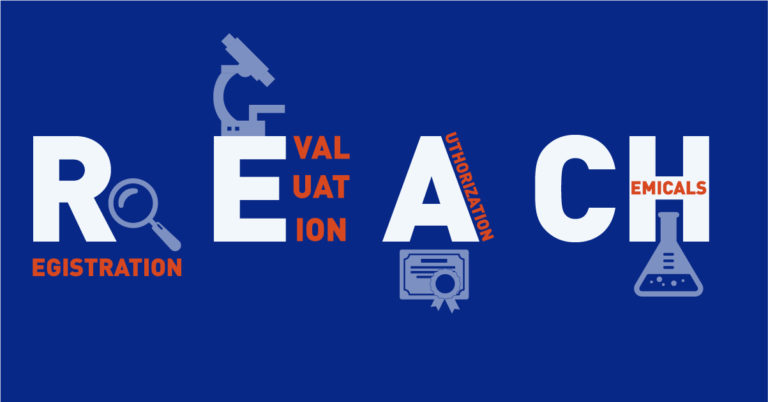

What is REACh?
REACh stands for Registration, Evaluation, Authorization & Restriction of Chemicals. It is a European Union regulation adopted to improve the protection of human health and the environment from the risks that can be posed by chemicals, while enhancing the competitiveness of the EU chemicals industry. REACh came into effect on the 1st of June 2007. REACh regulations apply to all chemical substances produced or imported into the European Union. Learn more about REACh.
Every year, the ECHA (European Chemical Agency) evaluates new chemical substances and implements restrictions, if necessary, or authorizes their use. When last updated on the 20th December 2018, 69 unique substances/entries were listed in Annex XVII, the REACh restricted substances list. REACh compels chemical manufacturers to be responsible, and to develop alternatives to hazardous products that will limit negative impact on the environment and human health.
REACh regulations are strict. As a large portion of the aerospace industry deals with or operates in the European Union, aerospace companies are required to use REACh compliant products. Numerous chemicals are used in aerospace operations, and newly evaluated products are regularly added to the restricted substances list.
In aluminium surface treatment, the main chemicals identified by REACh as an issue are:
Hexavalent Chromium. Chromium VI compounds (entry 47) are listed on the restricted hazardous substances list, Annex XVII.
Borates Salts. Borate Salts are registered on the REACH SVHC (Substances of Very High Concern) list.
Impact of chemical restrictions on OEMs and MROs
Environment, health and safety management is one of the key priorities for aerospace companies. They have to use products as harmless as possible for employees, the community and the environment.
Hazardous products are often used in surface treatment operations. However, the aerospace industry is actively working on the evaluation and qualification of alternative REACh compliant substances. Chemical manufacturers are already developing alternate solutions. For example, SOCOMORE has developed a complete REACh compliant range for aluminum surface treatment, free from Cr(VI) and borate. Designed to meet the requirements of the major OEMs, the range includes solutions for:
- Degreasing: SOCOCLEAN A3432
- Deoxidizing: SOCOSURF A1858
- Conversion and sealing: SOCOSURF TCS/PACS
“Responsible chemists feel they have a big part to play in finding innovative solutions for a healthier and more environmentally friendly working environment. I am very proud to work in a R&D team that is developing an alternative process to Cr(VI) for conversion treatments or for sealing after anodizing. The major OEMs like our innovation and qualified SOCOSURF TCS (Trivalent Conversion & Sealing) / SOCOSURF PACS (Passivation After Conversion & Sealing).” says Marion Ely, R&D Project Manager – Surface Treatment at SOCOMORE.
For more info, read our article “Good results for SOCOSURF TCS / SOCOSURF PACS as alternative to Chrome (VI)”.
Even though REACh is a European regulation, other parts of the world are also looking at the hazardous risks posed by some chemical substances. In North America, chemical legislation is very fragmented with each state in the US having its own regulations. There is no federal ban per se, like REACh in the EU. Cr(VI) products are still widely used. In the aerospace sector, the OEMs drive their own corporate regulations. Efforts have focused on reducing the use of Cr(VI) by approving alternative solutions. Boeing, Bombardier, Lockheed Martin and Collins Aerospace (formerly UTAS), etc. are all in the process of approving and implementing Cr(VI) free alternative solutions.
OEM and MRO concerns
In aerospace, aircraft OEMs (Original Equipment Manufacturers) produce aircraft which must be airworthy, safe, reliable and have a long life span. MRO (Maintenance, Repair and Overhaul) operators have to ensure that aircraft are maintained in predetermined conditions of airworthiness to safely transport passengers and cargo. Therefore OEMs and MROs have very strict procedures to follow.
They also have significant constraints and criteria to consider when choosing suppliers:
- Products need to have a long life cycle: from design and manufacture, to service and disposal.
- Suppliers must be sustainable and trusted: the right suppliers are established and viable, provide the most suitable goods in the right time frames, and have multiple sourcing andproduction capabilities to minimize risk.
- Suppliers must have specialist chemical knowledge and expertise.
- Qualifying products to their specifications can take a long time and requires patience and cooperation from the supplier.
- Flyable chemical substances must be compatible with aircraft materials for safety.
- Products need to keep the aircraft operational for more than 30 years.
Suppliers with new chromate and fluoride free solutions
Responsible chemical manufacturers are developing new products that are safer for the environment and workers’ health. The surface treatment industry traditionally used chromate deoxidizers but now new chrome and fluoride free deoxidizers like SOCOSURF A1858/ A1806 exist.
Notes: Companies like SOCOMORE and Mecaprotec have worked closely with universities to find solutions without chrome VI for the conversion and sealing process in aluminium surface treatment. Read more about this collaborative project on EMC2 website (text is in French only).
What are Chromium VI compounds?
Chromium VI compounds can be called:
- Hexavalent chromium
- Chrome VI or Cr(VI)
- Chromat
Hexavalent chromium is one of the variations of chromium, a chemical element. Since the Second Industrial Revolution, chromium and its derivatives are used in many industries due to their anti-corrosive properties. Today, due to the hazardous impact of chromium on the environment and health, industries are looking for suitable alternative products that provide the same level of corrosion protection.
The REACh ban on the use of Cr(VI) in chemical products will come into effect in the next five years. In the aerospace industry, chromium is one of the most used elements for corrosion prevention, which is of vital importance for aircraft safety. That is why aircraft companies are looking for suitable Cr(VI) alternatives. First the products have to be developed. Then the products must go through a rigorous testing process to ensure their safety and suitability, which takes time, before they can be implemented in the surface treatment line.
Chromium VI applications in aluminium surface treatment
In the aerospace industry, 95% of aluminium alloy parts undergo surface treatment to obtain anti-corrosion properties. In the aluminium surface treatment process, hexavalent chromium compounds can be found in:
- Acid deoxidizers such as sulfochromic deoxidizers (Deox 6/16, Deox 7/17, Tri-acid etchant, etc.)
- Anodizing solutions (CAA)
- Sealing solutions (diluted sodium dichromate, etc.)
- Conversion coating solutions and paint
- Adhesion promoting products
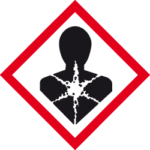

Dangers of Hexavalent Chromium
Hexavalent chromium is classified as hazardous:
- Respiratory sensitization Category 1
- Skin sensitization Category 1
- Germ cell mutagenicity Category 1B
- Carcinogenicity Category 1A
- Reproductive Toxicity Category 1B
Hexavalent chromium compounds are a category 1 and 2 CMR (Carcinogenic, Mutagenic or Toxic for Reproduction) according to CLP regulation (Regulation (EC) No 1272/2008 on Classification, Labelling and Packaging of substances and mixtures). Operators handling Cr(VI) are exposed to:
- Lung cancer
- Irritation or damage to the nose, throat and lungs
- Irritation or damage to the eyes and skin
Get more information on the health impacts of Chromium VI compounds on the OSHA website (US Occupational Safety and Health Administration).
What is fluoride?
Hydrogen fluoride (HF) dissolves in water to form hydrofluoric acid.
Hydrofluoric acid can also be called:
- Fluoric acid
- Fluorhydric acid
- Hydrogen fluoride
- Hydrofluoride
- Fluorine monohydride
Hydrofluoric acid is classified as a weak acid because of its lower dissociation constant compared to the strong acids, but it is still extremely powerful and corrosive. Fluoride is not on a restricted substances list but it is still a hazardous substance. HF is on the EPA list as both a hazardous air pollutant and toxic substance.
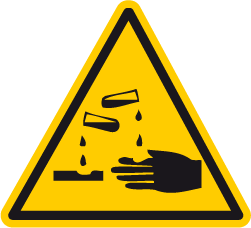

Fluoride applications in aluminium surface treatment
Hydrofluoric acid is used in many industrial applications including industrial chemistry, mining, refining, glass finishing and cleaning. In aluminium surface treatment, fluoride is used in deoxidizing solutions because of its ability to dissolve oxides. Deoxidizers with fluoride have an excellent etch rate. However, fluoride baths need to be regularly monitored as the fluoride content evolves over time, affecting the etch rate.
For more information, please read the article “Chromate and Fluoride Free Aluminium Deoxidizers”
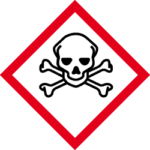

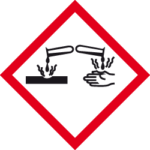

Fluoride dangers
Fluoride is an extremely dangerous substance as it contains hydrofluoric acid (HF). The Safety Data Sheet contains the following hazard statements:
- H300 + H310 + H330 Fatal if swallowed, inhaled or comes in contact with skin.
- H314 Causes severe skin burns and eye damage.
- Hydrogen fluoride becomes hydrofluoric acid when dissolved in water. It is highly corrosive and toxic. Hydrogen fluoride is harmful if it is inhaled or comes into contact with skin.
- Inhaling hydrogen fluoride can cause damage to lung tissue and death if concentrated vapors are inhaled.
- Dermal exposure can be fatal. Can cause severe burns which may not show until the day after exposure. The fluoride ions in HF also readily penetrate the skin and can cause systemic poisoning. They bind primarily the body’s calcium and magnesium ions leading to electrolyte imbalance, decalcification of bone, cardiac arrhythmia and death.
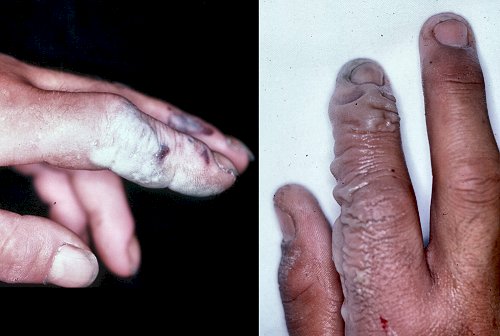

Medical treatment is needed if a HF burn occurs. First, immediately:
- Wash the affected area with cold clean water for a prolonged period
- Apply calcium gluconate gel
Strict safety procedures and the use of adequate personal protective equipment are required if handling hydrofluoric acid:
- Laboratory coat and acid resistant apron.
- Close-toed shoes and long pants.
- Goggles, or full-face shield in conjunction with goggles.
- Gloves (e.g. nitrile gloves)
This article explains why chemical solutions containing chromate and fluoride are considered hazardous. In aerospace, these solutions are mainly used for deoxidizing in aluminium surface treatment.
If you would like to know more about our chromate and fluoride free deoxidizer, please contact us.
Read more:
[Brochure] Discover our range of Cr(VI) and borate free products for aluminium surface treatment
[Article] Chromate and Fluoride Free Aluminium Deoxidizers
[Article] Deoxidizer with a Triple BOMBARDIER, BOEING and AIRBUS Qualification
